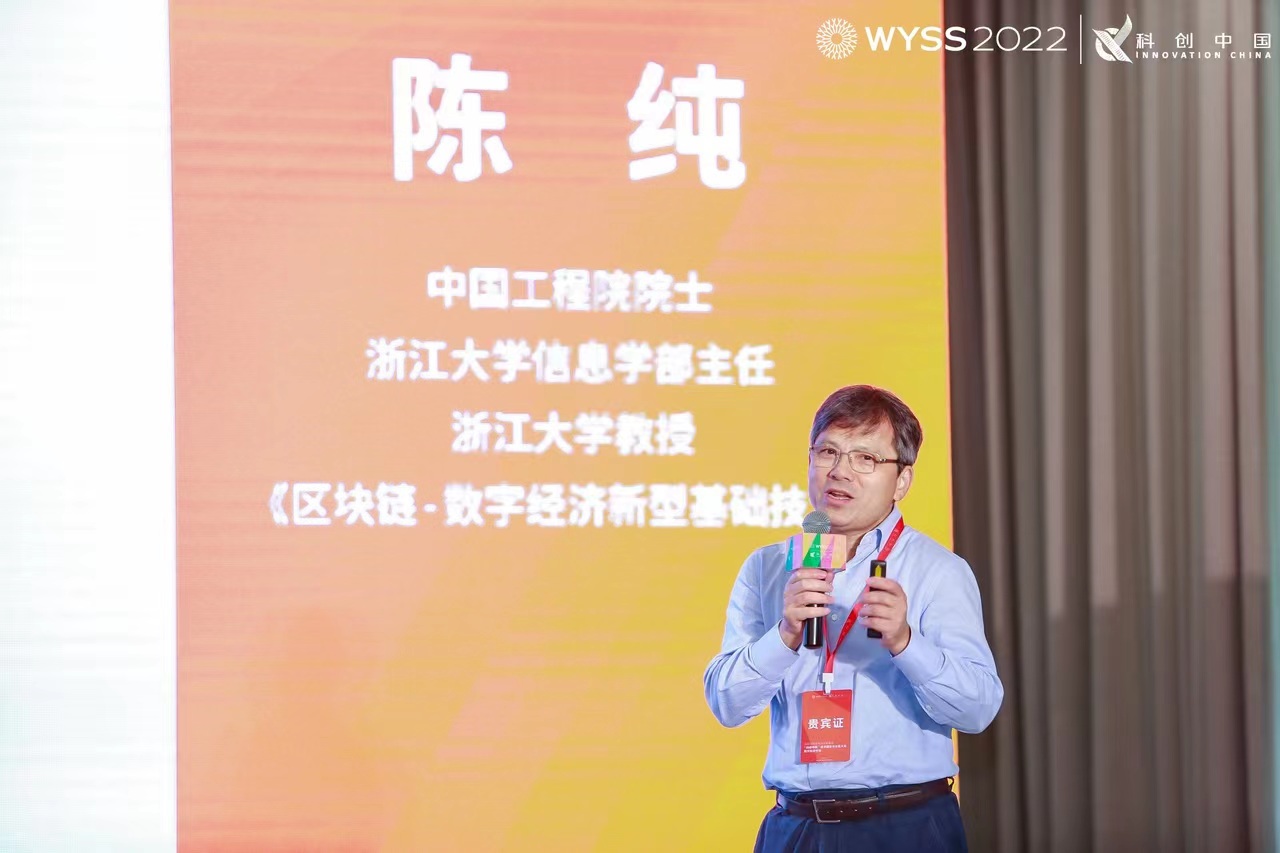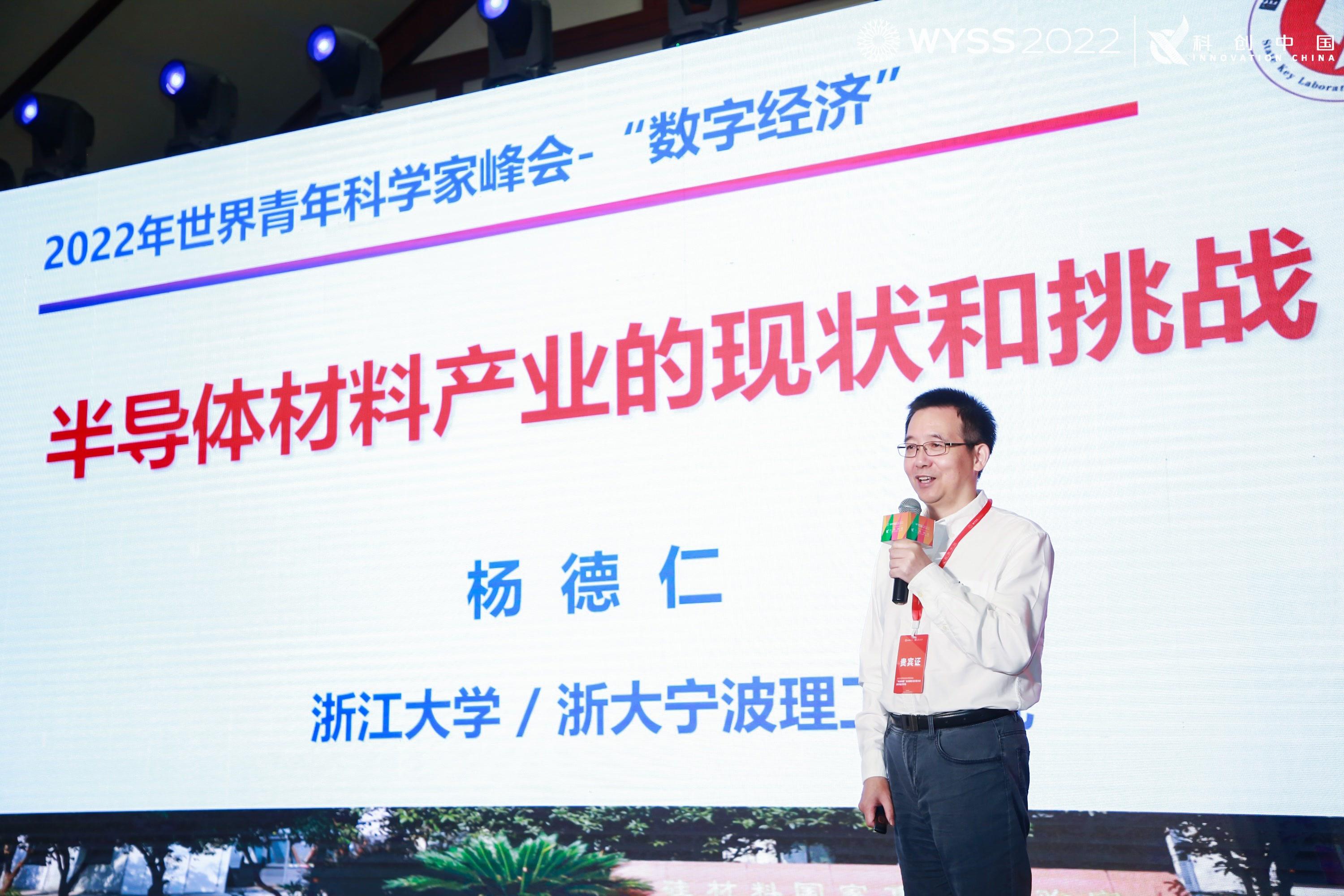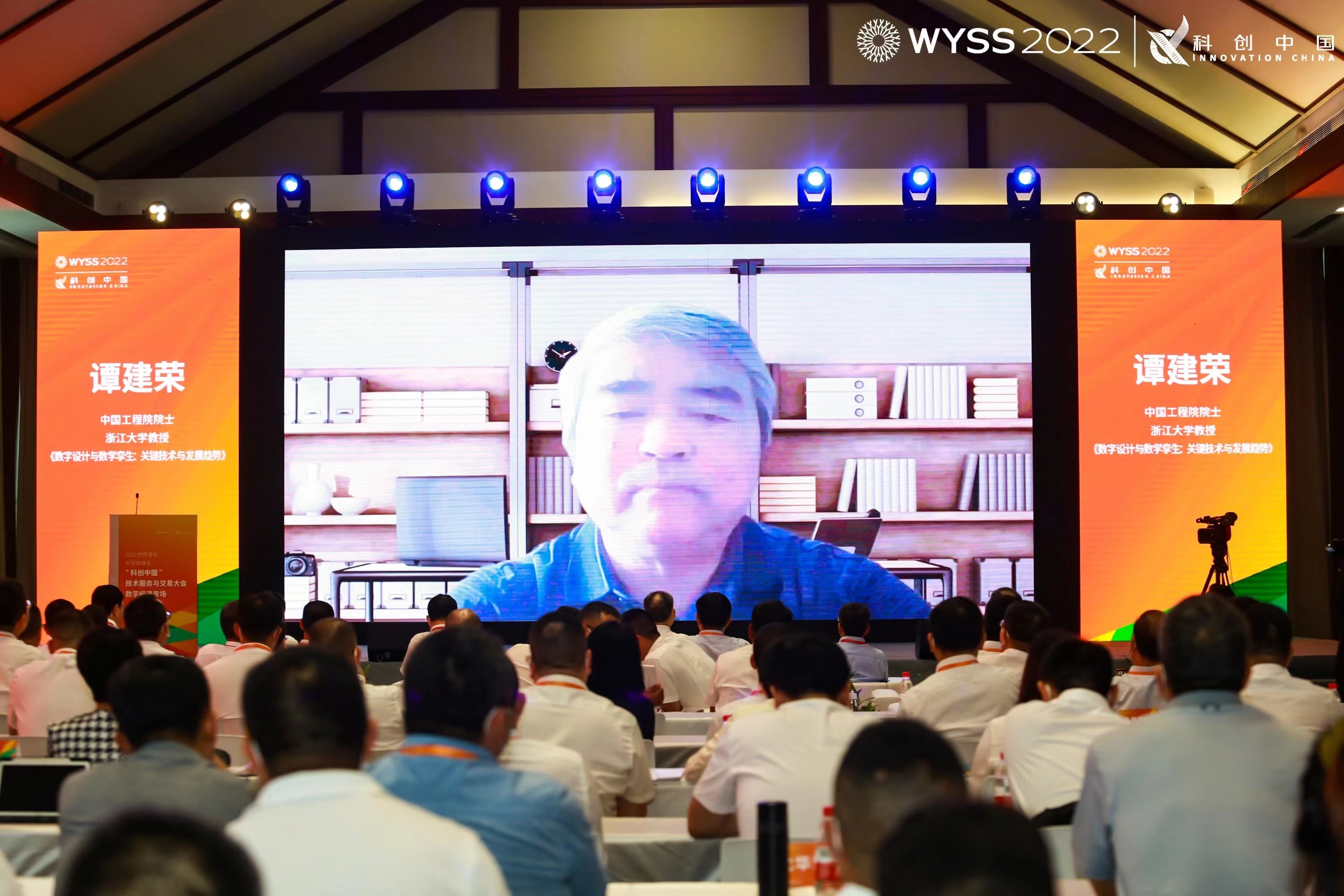On June 26, 2022 World Young Scientist Summit-“Innovation China” Technical Service and Trade Conference Digital Economy Special Conference was held in Wenzhou. At the Conference, academician Chen Chun of Chinese Academy of Engineering, academician Yang Deren of Chinese Academy of Sciences, academician Tan Jianrong of Chinese Academy of Engineering and other experts and scholars, delivered keynote reports on the research of “Blockchain-New Basic Technology of Digital Economy”, “Current Situation and Challenges of Semiconductor Materials Industry”, “Digital Design and Digital Twin”, etc., which will help Wenzhou to further build a digital economy highland in southeast Zhejiang. The editor excerpted the highlights of the reports.
Blockchain-New Basic Technology of Digital Economy
Reporter: Academician of Chinese Academy of Engineering, Director of Information Department of Zhejiang University, Professor Chen Chun of Zhejiang University

Blockchain is essentially a distributed account book database, which realizes distributed data management and sharing through distributed consensus algorithm, and encrypts information through cryptography to protect privacy. Blockchain has three organizational forms: public blockchain, consortium blockchain and private blockchain. Blockchain must solve three major problems: high performance, high availability and security and privacy protection.
In terms of high performance, it is necessary to develop consensus algorithms with high performance and strong anti-attack power; develop the computer organization mode from a single machine to a cluster to improve the business processing ability of nodes; promote software and hardware collaborative optimization technology to improve system throughput.
In terms of high availability, the underlying protocol can efficiently support the dynamic entry and exit of nodes, as well as the rapid recovery and data synchronization of failed nodes. A new management system can be formed through alliance autonomous management.
In terms of security and privacy protection, open source products led by Western technicians, such as hyperledger, support foreign encryption algorithms, so it is necessary to study the blockchain platform that supports China’s national secret algorithm. In addition, there are also problems in data privacy protection, a combination of new and old systems, distributed storage and system supervision.
Blockchain has brought new development opportunities for digital economy. In all previous digital economies, the most important thing is to improve productivity. Blockchain can not only promote the development of productivity, but also improve production relations.
The digital economy digitalizes the industry and has applications in traditional industries such as finance, while the emerging digital economy industry cannot be separated from the blockchain. The underlying technology of emerging metaverse is supported by the blockchain. Blockchain can also promote the modernization of China’s governance system and governance capacity, and can realize cross-departmental data sharing. The Ministry of Housing and Urban-Rural Development has made a provident fund sharing platform to achieve cross-departmental and cross-regional provident fund business collaboration. In the digital society, blockchain has important applications in intellectual property rights and national “carbon peaking and carbon neutrality” strategy.
The development and application of blockchain are facing some challenges. In terms of security, blockchain still lacks a systematic theoretical basis and security completeness verification. In terms of supervision, distributed, tamper proof and other characteristics make it difficult to supervise the public opinion content in violation of regulations and use cryptocurrency to launder money. Finally, there are still challenges to the performance of blockchain itself. For example, the existing blockchain technology is still two orders of magnitude away from the requirements of handling the peak transaction volume of Taobao Double 11.
Current Situation and Challenges of Semiconductor Materials Industry
Reporter: Academician of Chinese Academy of Sciences, President of Zhejiang University Ningbo Institute of Technology, Deputy Secretary of Party Committee, Professor Yang Deren of Zhejiang University

The support point of digital economy is semiconductor. It can be said that 1/5 of China’s GDP is supported by integrated circuits, which are only a part of the semiconductor industry.
The import demand for integrated circuits remains huge. In 2021, we imported USD 432.05 billion of integrated circuits, which ranked first among all imports. Why is it difficult to get rid of such dependence? The high-end devices in the United States are embargoed, the procurement cost is high, and the supply cycle is unstable. The semiconductor industry includes many fields such as design, process, packaging, equipment and materials, which is actually the link of many industrial fields.
General element semiconductor materials (silicon and germanium), compound semiconductor materials, wide band gap semiconductor materials and ultra-wide band gap semiconductor materials that may be industrialized in the future are commonly known as the first generation, second generation, third generation and fourth generation semiconductor materials respectively. In fact, these generations of semiconductor materials have different performance characteristics and different application fields, which are applied in modern industries at the same time, and are not a mutual substitution relationship.
The current situation of the development of China’s semiconductor industry is presented as follows.
The first category is silicon. The most basic raw material is electronic grade polysilicon, which is mainly monopolized by enterprises in Germany, the United States and Japan. China’s output is about 8% of the world’s output. There is still a big gap in electronic grade polysilicon materials for 12-inch integrated circuits. China has achieved good performance in photovoltaic solar silicon material. Polysilicon has occupied 67% of the global photovoltaic market, which is one of the few leading high-tech industries in China in the world.
The second category is compound semiconductors, such as gallium arsenide. In China, technology has reached the level of industrialization, but production capacity, quality and ability still need to be improved.
The third type of materials includes two categories, one is gallium nitride, including single crystal and epitaxial materials. As for GaN single crystal, the low-end materials have been localized, and the high-end materials are basically occupied by foreign enterprises. In terms of extension, China has a certain influence, but high-end products have yet to be developed. The other is silicon carbide, which is overinvested and has been established as a guiding project of the National Development and Reform Commission. However, there are problems such as excessive planned production capacity, serious homogenization technology and lack of core technology.
Finally, I would like to share with you the challenges faced by semiconductor materials. First, the semiconductor material industry features a long research and development cycle and a high technical threshold. Second, in terms of talents, the industry needs specialized talents, and talents all over the world are relatively concentrated, so it is difficult to bring them in through a simple introduction. The third is capital. Our investment is too scattered, which makes it difficult for each enterprise to become stronger and form its core competitiveness.
Digital Design and Digital Twin: Key Technologies and Development Trends
Reporter: Academician of Chinese Academy of Engineering, Deputy Director of Academic Committee of Zhejiang University, Professor Tan Jianrong of Zhejiang University

After more than 40 years of reform and opening up, China’s manufacturing industry has made great progress. However, many enterprises are still in the middle and lower end of the industrial chain, and they all need transformation and upgrading. Fundamentally, it depends on technology to realize the transition economy, and the most important foundation is digital manufacturing, networked manufacturing and intelligent manufacturing.
Mechanical and electrical products have experienced mechanization, electrification and informationization, and are now developing towards intelligence. The most important thing for our enterprise is to make a good generation of products. This requires technology to solve the problem of how to do it. For mass production, we also need a class of molds, all of which we need a generation of design, and we need digitalization, networking and intelligence to realize transformation and upgrading.
Our engineering science has three major means: theoretical modeling, experimental construction and simulation. Simulation combines virtual reality with reality, which is a revolution. We use a digital prototype to verify the product function and analyze the performance, reduce the cost and shorten the development cycle. This is the main means to help enterprises realize independent research and development, independent design and independent innovation.
Digital twin includes product modeling, simulation and so on, which supports the testing and verification of product performance and function, and improvements of products through historical and manufacturing data. It has eight key technologies: Multi-source heterogeneous data conversion and integration technology for complex equipment, modeling technology of geometric and physical behavior conditions of complex equipment, digital twin multi-performance coupling analysis technology of complex equipment, digital twin behavior simulation technology driven by big data, complex equipment life cycle operation process simulation technology, intelligent workshop layout planning and production scheduling optimization technology, operation state visual analysis and fault intelligent prediction technology, and maintenance operation navigation technology based on augmented reality.
There are three major trends now. First, quasi-materialization connects models with different physical attributes and integrates simulation, diagnosis, prediction, and control through these models through digital twins. The second one is the whole life cycle. The research of digital twins mainly focuses on product design and after-sales service stage, and now the whole life cycle, from product design to maintenance, use, sales and delivery, needs to be taken into account. The whole life cycle is studied and applied in different stages of manufacturing through digital generation. The third one is integration. We now need to integrate communication technology, big data analysis technology, virtual reality and augmented reality technology based on digital link technology.
